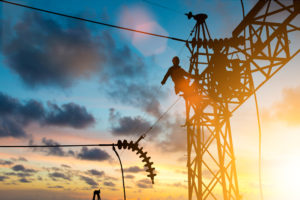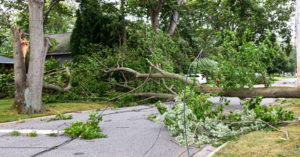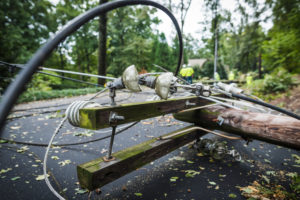
Thomas Edison, who invented the electric light bulb and founded the first commercial electric company, certainly recognized the power of electricity. However, it would have been difficult for a man in the 1870s to imagine 21st century America, with its 3,300 electric companies servicing millions of people and a power grid that connects about 2.5 million miles of feeder lines and over 450,000 miles of high-voltage transmission lines.
The expansion of the electric industry has also made it more dangerous. For example, transmitting electricity is growing more hazardous. And what is perhaps most concerning is the naked eye does not easily see these increasing dangers.
As the New Orleans Supreme Court stated in its 2006 decision for Foley vs. Entergy Louisiana Inc., a case involving a roofer who was electrocuted by 8,000 volts of electricity, “…a high tension transmission wire is one of the most dangerous things known to man. Not only is the current deadly, but the danger is hidden away in an innocent-looking wire ready at all times to kill or injure anyone who touches it or comes near to it.’’
Harm to Workers and Legal Responsibilities
While everyone should stay diligent and exercise caution when using electricity, industry workers must be especially careful to recognize its risks. Increasing numbers of electrocutions are leading to catastrophic injuries and death, particularly near live electrical wires. While the rise in fatalities is daunting, the government has regulated measures in place at the state and federal levels to protect these workers.
According to the latest release by the Bureau of Labor Statistics, in 2019, the country’s workforce saw more than 2,000 electrical injuries. One hundred sixty-eight of them were fatal, a 3.75% increase over the previous year and the highest number of deaths since 2011.
There are four major Louisiana electric companies: Cleco Power, Dixie Electric Membership Corporation, Entergy and Southwestern Electric Power Company. Each is responsible for maintaining safe systems by meeting all legal requirements determined by the following entities.
The National Electrical Safety Code (NESC) was established more than 100 years ago to create standard safety and maintenance guidelines for electric companies across the country. These include directives on the height of power lines and their positions over different structures, such as streets, highways, bridges, railroad tracks and waterways.
The state legislature passed the Louisiana Overhead Power Line Safety Act (LOPLSA) to promote worker and public safety. It applies to anyone working near overhead power lines.
Here are some key components of LOPLSA:
- No unauthorized persons may work, including moving equipment, within ten feet of any high voltage overhead electric utility line.
- If any unauthorized person intends to work within ten feet of any high voltage overhead electric utility line, the person responsible for the needed work must notify the owner or operator of said utility line not less than 48 hours prior to commencing work.
- Work shall be performed only after satisfactory mutual arrangements have been made between the owner or operator of the high voltage overhead electric utility line and the person deemed responsible for the work.
How Workers Can Be Safe
The Occupational Safety and Health Administration (OSHA), created by Congress to ensure American workers’ protection while on the job, stresses that each worker should approach all electrical equipment as if energized with electricity, whether power is on or off. Remember, circuits do not always turn off when a power line falls into a tree or onto the ground.
It is also important to recognize the importance of insulating power lines and what hazards can occur when it wears down or fails. While electric companies must keep power lines either fully insulated (with a coating of a mineral substance like rubber) or insulated by isolation (hanging a line high enough that it “isolates” from the public), they will lose their protection over time. People must always stay cautious to keep themselves safe.
Here are some more tips from OSHA:
- Do not assume that any wire is a harmless telephone, television or fiber optic cable not carrying a lethal current.
- Treat everything electrical as energized until it is tested and proven completely off.
- Never approach or drive over a downed electric power line.
- Remember that electricity from a downed live wire can spread outward through the ground in a circular shape from the point of contact.
What to Do if You Sustain an Electrocution Injury
If a worker is electrocuted and is experiencing difficulty breathing, heart rhythm problems, muscle pain, seizures or has received severe burns, seek immediate emergency care. Bystanders should stay with the victim until help arrives, turning off the electricity only if it is safe to do so. Administer CPR if necessary, monitor the victim’s breathing, and keep him warm if he becomes chilled.
If you or your loved one has suffered an electrocution injury, the negligent party must be held accountable, whether it is an individual, business or an electric company. An electrocution victim often cannot work for an extended period of time or may even need medical care for the rest of his life. Even if an electric utility company complied with the NESC, it may still be responsible for a personal injury claim caused by electrocution. Possible recoverable damages include medical expenses, lost wages and future loss of earnings, permanent disability, scarring or disfigurement, and emotional pain and suffering.
Contact an experienced Louisiana electrocution injury attorney at Herman, Katz, Gisleson & Cain at (504) 581-4892 or fill out a case review form online for more information about legal options.

Jed Cain is a partner with Herman, Herman & Katz, LLC. He has dedicated his career to representing injured folks and their families.














Comments for this article are closed.